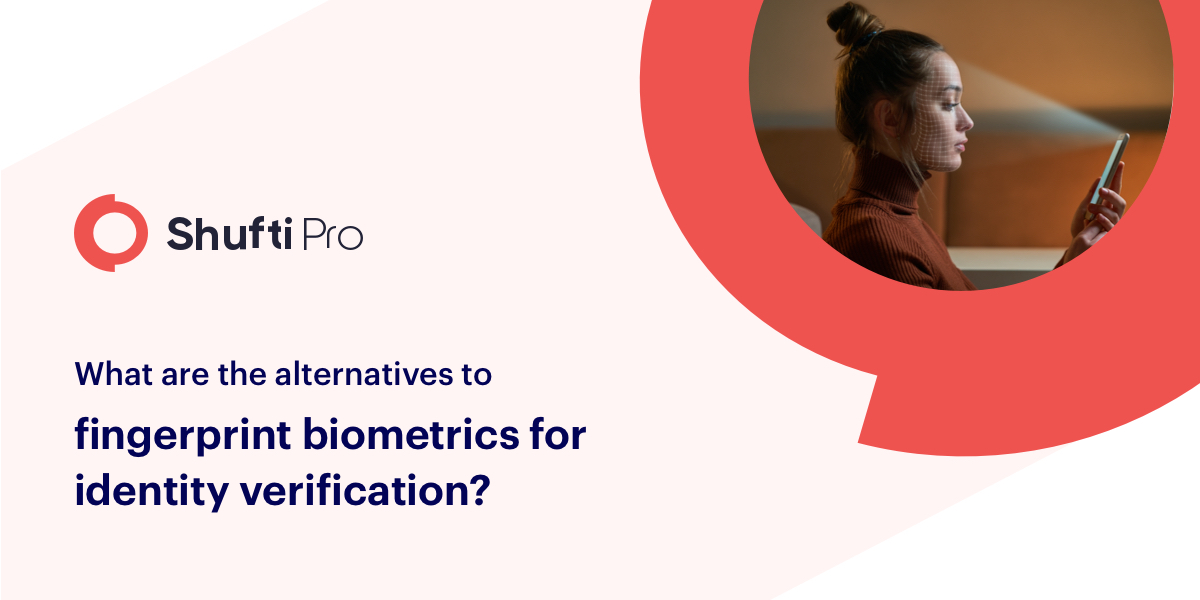Post COVID-19 – What are the alternatives to fingerprint biometrics for identity verification?

The way things are headed, there is no doubt about the fact that the world will be a different place following the COVID-19 epidemic. This novel disease, which started in Wuhan, the Chinese city of Hubei province, has until now consummated the lives of 148,634 people across the world, according to worldometer. There is no scientific evidence as to when this epidemic will end and the whole world is anxiously looking towards medical researchers and scientists to come up with a vaccine for the virus. Most of the countries are under lockdown, as per the instructions of the World Health Organization (WHO). Many businesses and organizations have closed down while others have resumed operations from home to limit the chances of the spread of the deadly virus.
In the United States, more than 99% of all businesses are small-scale, and they employ about half the US workforce. Most of the small businesses lack the cash reserves to weather a month-long interruption, and analysis indicates that approximately 2 million workers could lose their jobs in only one week due to the COVID-19 outbreak. There’s also the likelihood of a “startup depression,” wherein new companies do not prefer to enter the market due to the epidemic. Digital transformation is necessary to sustain the changes occurring due to COVID-19, so businesses are considering the adoption of contactless substitutes for primary business activities, such as customer due diligence, employee verification, risk prevention, etc.
The Economic Downfall
Ever since the world befell into the hands of the Coronavirus, the measures mandatory for containing the virus have set off an economic downturn. Currently, there is huge uncertainty about its intensity and duration. The latest Global Financial Stability Report indicates that the financial system has witnessed a significant impact, and further escalation of the calamity could seriously impact global financial stability. Many businesses and firms have closed down while others have confined their operations to the boundaries of their homes to limit the chances of the spread of the deadly virus.
According to The Economic Times, an investigation of the UN Department of Economic and Social Affairs (DESA) revealed that the Coronavirus outbreak has damaged the global supply chains and international trade. With nearly 100 countries closing national borders during the past month, the movement of people and tourism flows have come to a screeching halt. Millions of workers in the affected countries are on the verge of losing their jobs.
Security at Risk?
To prevent the economy of their country from collapsing completely, many government representatives have allowed organizations and firms to continue their operations as per routine, provided they strictly follow the precautionary measures set by the WHO for the prevention of the virus. Another major threat that many organizations and institutions have to look out for is fraud and identity theft. Many criminals and fraudsters are portraying themselves as customers and employees of organizations to gain access to their systems. Once inside, they pose a great threat to the organization’s useful data and resources.
Previously many firms had installed PINs and passwords to prevent the risk of security threats but these methods were not secure due to the chances of a leak. To further enhance security, some firms had adopted fingerprint biometrics for identity verification purposes but this method again cannot be used due to the risk of virus contamination. The most effective method of customer and employee authentication for businesses, financial and government institutions is contactless digital identity verification (DIV).
Is Contactless Digital Identity Verification becoming the norm?
Artificial intelligence-based digital identity verification systems seamlessly authenticate identities without the need for contact with a scanning machine. These systems can be integrated onto the online platforms of organizations and verify the identities of individuals from anywhere around the globe via the internet. Users can be verified within seconds without any assistance from the staff in the bank, airport, office, or hospital. Remote customers can be quickly onboarded remotely without any sort of in-person interaction with them.
Face Verification
The use of artificial intelligence systems to detect and analyze facial features for authentication purposes. It helps prevent the risks of 3D mask attacks, print photos and screenshots, distorted images, fake video replays, and eye-cut photo attacks. Currently face verification is the feasible substitute for fingerprint scanners to perform biometric authentication.
Document Verification
The use of artificial intelligence systems to detect the authenticity of various government-issued documents to manage fraud and identity theft. The verification is conducted via ID cards, driving license, passport, bank cards, etc.
Address Verification
The use of artificial intelligence technology to verify addresses from the user-documents to minimize the chances of document manipulation. The verification is done from ID cards, driving license, utility bills, etc.
The digital identity authentication systems have previously been used by banks, financial institutions, online merchants, etc, but since the contagious COVID-19 pandemic, it is a must-have solution for all public places of interaction. Besides diminishing the chances of the spread of the Coronavirus, the digital identity validation technique fulfills the KYC and fraud prevention requirements of a large number of industries, including traveling, hoteling, banking, education, medicine, security, and online retail.
Although it may not be apparent at first, every cloud has a silver lining. The world will emerge victorious out of this catastrophe. In the meantime, we should all ponder over ways to turn this situation favorable for ourselves. We should come out stronger and develop techniques that not only make human lives easier but more protected and prosperous. Contact-less digital identity verification is one method to ensure this.










